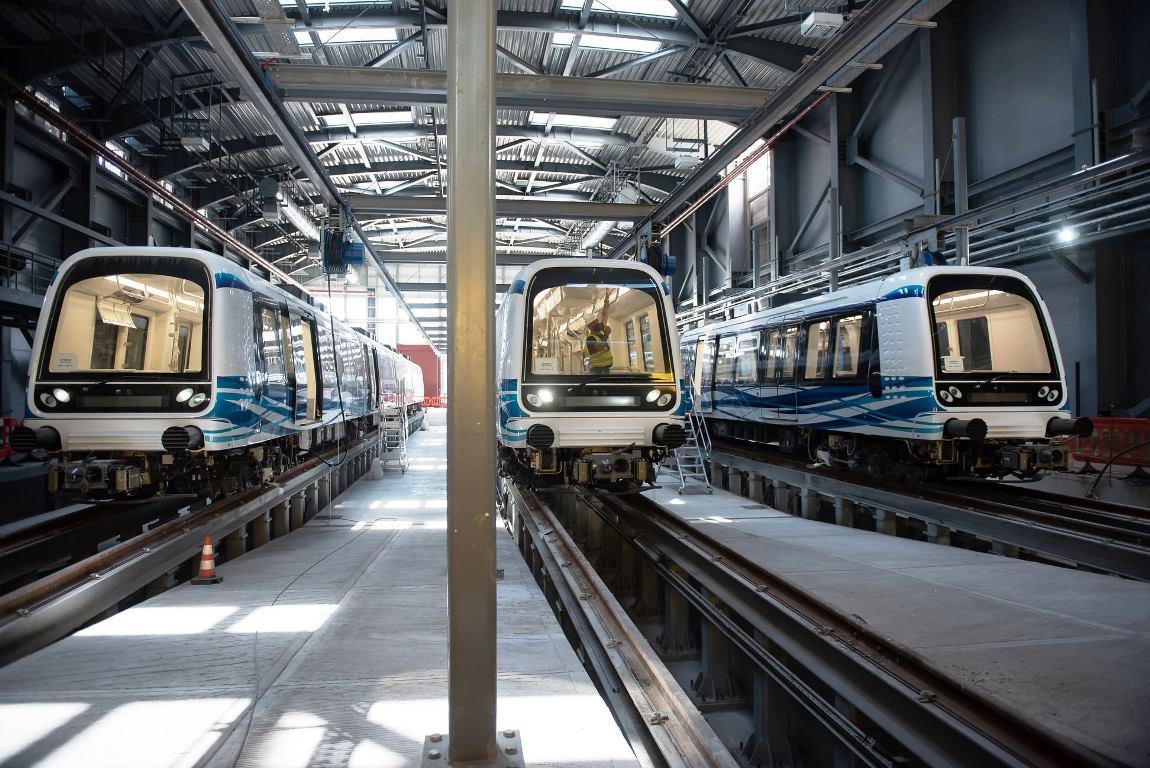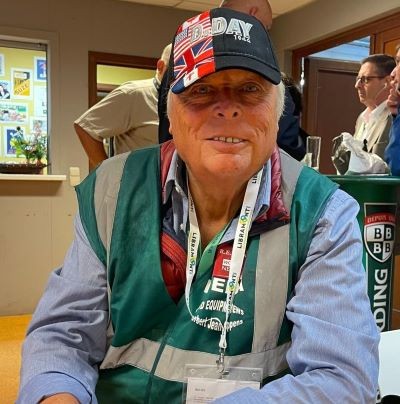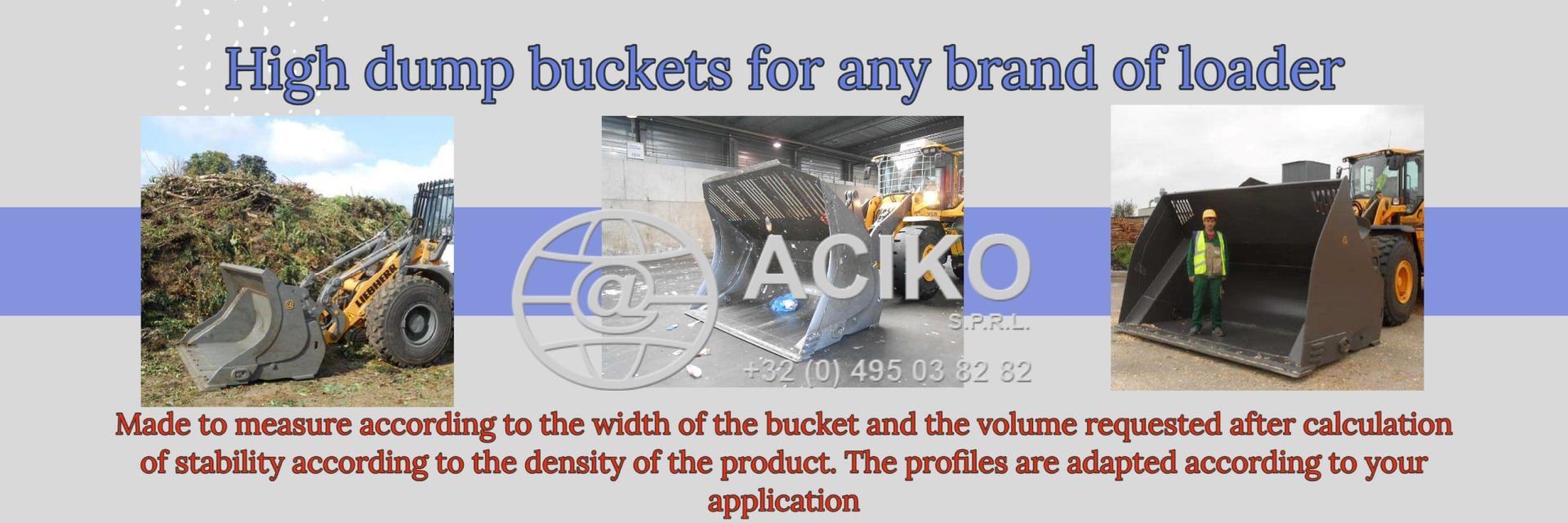R.E.News International-Thessaloniki’s New Metro Line Spurs Revival of the City’s Ancient Legacy
 18/11/24-FR-English-NL-footer
18/11/24-FR-English-NL-footer
La nouvelle ligne de métro de Thessalonique fait revivre l’héritage antique de la ville
 Image- Thessaloniki Metro
Image- Thessaloniki Metro
Alors que Thessalonique se prépare à l’inauguration tant attendue de sa première ligne de métro automatisée le 30 novembre 2024, le paysage de la ville est sur le point de se transformer de plusieurs manières.
Ce projet révolutionnaire, dirigé par le géant mondial de la construction Webuild, n’est pas seulement un développement de transport en commun ; c’est une fusion ambitieuse de technologie de transport de pointe et de préservation historique. Le nouveau métro de Thessalonique, qui s’étend sur 10 kilomètres et compte 13 stations, promet non seulement de révolutionner les déplacements urbains, mais aussi de mettre en lumière la riche tapisserie historique de Thessalonique.
Avec une planification complexe, des prouesses d’ingénierie et des découvertes archéologiques remarquables, ce projet illustre comment les infrastructures modernes peuvent coexister avec le patrimoine culturel.
La construction du métro de Thessalonique a présenté des défis uniques dès le départ. Situé dans l’un des centres urbains les plus densément peuplés de Grèce, le projet a nécessité une ingénierie de précision pour garantir une perturbation minimale tout en préservant des sites archéologiques inestimables. Pour y parvenir, une grande partie de la ligne a été construite à l’aide de tunneliers, un choix d’ingénierie qui a permis à l’équipe de creuser profondément sous la ville sans perturber sa surface animée.
Les tunnels du métro ont été construits à une profondeur moyenne de 20 mètres, minimisant l’impact sur le paysage urbain antique et moderne. Les tunneliers ont permis à l’équipe de creuser à travers l’histoire stratifiée de Thessalonique, révélant des vestiges de l’époque byzantine. Ces machines ont offert une méthode d’excavation contrôlée, permettant à l’équipe d’effectuer des ajustements critiques au fur et à mesure des découvertes.
Des artefacts historiques dans des lieux inattendus
Au cours des fouilles du projet, l’équipe d’ingénierie a découvert une série d’artefacts byzantins, ajoutant à la fois un défi et un élément enrichissant au développement.
Des découvertes importantes, notamment des murs et des routes anciennes, ont conduit l’équipe de construction à repenser la conception des stations dans certaines zones. Par exemple, à la station Demokratias, les plans ont été ajustés pour garantir que ces reliques restent en place, déplaçant finalement l’emplacement de la station de 10 mètres pour accueillir un mur byzantin.
La sensibilité de l’équipe à ces découvertes rappelle l’équilibre délicat entre l’expansion urbaine et la préservation historique. À chaque découverte, Webuild a collaboré étroitement avec des archéologues pour récupérer, améliorer et intégrer ces artefacts dans la conception du métro, transformant les stations en vitrines historiques où les voyageurs peuvent apprécier le patrimoine de la ville en temps réel.
Transport automatisé et respectueux de l’environnement
Une fois pleinement opérationnel, le métro de Thessalonique constituera un saut technologique pour la Grèce. Construit en partenariat avec Elliniko Metro et un consortium comprenant Hitachi d’Italie et Aktor de Grèce, le métro bénéficie d’un système entièrement automatisé qui promet une efficacité sans précédent.
Les trains circuleront à des intervalles de seulement 90 secondes aux heures de pointe, et devraient transporter jusqu’à 315 000 passagers par jour. Cette fréquence améliore non seulement le confort des déplacements, mais positionne également Thessalonique parmi les élites européennes en matière d’innovation dans le domaine des transports urbains.
Au-delà de l’efficacité, le métro aura un impact environnemental profond. La réduction du trafic automobile devrait permettre d’éviter environ 77 000 tonnes d’émissions de CO₂ par an, ce qui équivaut à retirer environ 60 000 voitures des rues de Thessalonique chaque jour. Cela correspond à l’engagement plus large de la Grèce en faveur du développement durable et à son objectif de réduire la pollution urbaine.
Préserver le passé, construire pour l’avenir
Le projet de métro de Thessalonique illustre la manière dont les infrastructures urbaines peuvent contribuer à la durabilité environnementale sans compromettre le patrimoine culturel. En tant qu’alternative écologique aux déplacements en voiture, il constitue un modèle de la manière dont les villes peuvent réduire les émissions et soulager les embouteillages.
En outre, l’intégration d’objets anciens dans la conception du métro établit une nouvelle référence pour les projets d’infrastructure dans les villes historiquement importantes du monde entier.
En équilibrant l’innovation et la préservation, Webuild et ses partenaires ont créé un système de métro qui reconnaît à la fois les besoins futurs et l’héritage passé de Thessalonique.
Partenariats clés du projet et perspectives d’avenir
Le métro de Thessalonique n’aurait pas atteint cette étape sans la collaboration de diverses expertises internationales. La société d’ingénierie italienne Hitachi, réputée pour sa technologie ferroviaire avancée, a fourni les systèmes d’automatisation, tandis que la société grecque Aktor a joué un rôle crucial dans la construction et la coordination locale. En collaboration avec Webuild, ils ont jeté les bases d’un système de métro de classe mondiale qui incarne l’innovation grecque et la coopération européenne.
À quelques semaines de son inauguration, Thessalonique est à l’aube d’une nouvelle ère de connectivité. La ligne de métro, une fois lancée, modernisera non seulement les transports publics de la ville, mais offrira également un rappel quotidien de son histoire vibrante et de sa richesse culturelle.
Un regard vers l’avenir
Le métro de Thessalonique est un exemple de la manière dont les villes peuvent harmoniser les infrastructures modernes avec le patrimoine culturel. En tant que première ligne de métro automatisée de Thessalonique, ce projet est plus qu’une simple modernisation des transports ; c’est un engagement envers l’avenir de la ville.
Les avantages écologiques, combinés à la préservation des trésors archéologiques, indiquent une nouvelle voie pour le développement urbain dans les régions historiquement riches.
NJC.© Info Thessaloniki Metro
-------------------------------------------------------------------------------------------------------------------
 18/11/24-English
18/11/24-English
Thessaloniki’s New Metro Line Spurs Revival of the City’s Ancient Legacy
 Image- Thessaloniki Metro
Image- Thessaloniki Metro
As Thessaloniki prepares for the long-anticipated inauguration of its first automated metro line on November 30, 2024, the city’s landscape is set to transform in more ways than one.
This ground-breaking project, led by global construction giant Webuild, isn’t merely a transit development; it’s an ambitious fusion of state-of-the-art transportation technology and historical preservation. The new Thessaloniki Metro, stretching across 10 kilometres with 13 stations, promises not only to revolutionise urban travel but also to shed light on Thessaloniki’s rich historical tapestry.
With intricate planning, engineering feats, and remarkable archaeological finds, this project exemplifies how modern infrastructure can coexist with cultural heritage.
Thessaloniki’s metro construction presented unique challenges from the outset. Set within one of Greece’s most densely populated urban centres, the project required precision engineering to ensure minimal disruption while safeguarding priceless archaeological sites. To achieve this, much of the line was built using Tunnel Boring Machines (TBMs), an engineering choice that allowed the team to dig deep below the city without disturbing its bustling surface.
The metro’s tunnels were constructed at an average depth of 20 metres, minimising the impact on both the ancient and modern cityscape. TBMs enabled the team to carve through Thessaloniki’s layered history, revealing relics from the Byzantine era. These machines offered a controlled method of excavation, allowing the team to make critical adjustments as discoveries emerged.
Historical Artefacts in Unexpected Places
During the project’s excavation, the engineering team encountered an array of Byzantine artefacts, adding both a challenge and an enriching element to the development.
Significant finds, including walls and ancient roadways, led the construction team to rethink station designs in certain areas. For example, at Demokratias Station, plans were adjusted to ensure these relics remained in place, ultimately shifting the station’s location by 10 metres to accommodate a Byzantine wall.
The team’s sensitivity to these discoveries is a reminder of the delicate balance between urban expansion and historical preservation. With each find, Webuild collaborated closely with archaeologists to recover, enhance, and incorporate these artefacts into the metro’s design, transforming the stations into historical showcases where commuters can appreciate the city’s heritage in real-time.
Automated, Eco-Friendly Transit
Once fully operational, the Thessaloniki Metro will be a technological leap for Greece. Built in partnership with Elliniko Metro and a consortium that includes Italy’s Hitachi and Greece’s Aktor, the metro boasts a fully automated system that promises unprecedented efficiency.
Trains will run at intervals of just 90 seconds during peak hours, expected to serve up to 315,000 passengers each day. This frequency not only enhances travel convenience but also positions Thessaloniki among Europe’s elite in urban transit innovation.
Beyond efficiency, the metro will have a profound environmental impact. The reduction in vehicle traffic is projected to prevent an estimated 77,000 tons of CO₂ emissions annually, equivalent to removing around 60,000 cars from Thessaloniki’s streets each day. This aligns with Greece’s broader commitment to sustainability and its goal to reduce urban pollution.
Preserving the Past, Building for the Future
The Thessaloniki Metro project exemplifies how urban infrastructure can contribute to environmental sustainability without compromising cultural heritage. As an eco-conscious alternative to car travel, it stands as a model for how cities can reduce emissions and ease congestion.
Additionally, the integration of ancient artefacts into the metro’s design sets a new benchmark for infrastructure projects in historically significant cities worldwide.
By balancing innovation with preservation, Webuild and its partners have created a metro system that acknowledges both the future needs and the past legacy of Thessaloniki.
Key Project Partnerships and the Road Ahead
The Thessaloniki Metro wouldn’t have reached this milestone without the collaboration of diverse international expertise. Italian engineering firm Hitachi, renowned for its advanced rail technology, provided the automation systems, while Greek company Aktor played a crucial role in construction and local coordination. Together with Webuild, they have laid the groundwork for a world-class metro system that embodies Greek innovation and European cooperation.
With the inauguration just weeks away, Thessaloniki is on the cusp of a new era of connectivity. The metro line, when launched, will not only modernise public transit in the city but also offer a daily reminder of its vibrant history and cultural depth.
A Look to the Future
The Thessaloniki Metro stands as an example of how cities can harmonise modern infrastructure with cultural heritage. As the first automated metro line in Thessaloniki, this project is more than just a transportation upgrade; it’s a commitment to the city’s future.
The environmentally-friendly benefits, combined with the preservation of archaeological treasures, signal a new way forward for urban development in historically rich regions.
NJC.© Info Thessaloniki Metro
---------------------------------------------------------------------------------------------------------------
 18/11/24-NL
18/11/24-NL
De nieuwe metrolijn van Thessaloniki zorgt voor heropleving van het oude erfgoed van de stad
 Image- Thessaloniki Metro
Image- Thessaloniki Metro
Terwijl Thessaloniki zich voorbereidt op de langverwachte opening van zijn eerste geautomatiseerde metrolijn op 30 november 2024, zal het landschap van de stad op meerdere manieren veranderen.
Dit baanbrekende project, geleid door de wereldwijde bouwgigant Webuild, is niet alleen een ontwikkeling van openbaar vervoer; het is een ambitieuze fusie van ultramoderne transporttechnologie en historisch behoud. De nieuwe metro van Thessaloniki, die zich uitstrekt over 10 kilometer met 13 stations, belooft niet alleen een revolutie teweeg te brengen in het stedelijk reizen, maar ook licht te werpen op het rijke historische tapijt van Thessaloniki.
Met ingewikkelde planning, technische hoogstandjes en opmerkelijke archeologische vondsten is dit project een voorbeeld van hoe moderne infrastructuur kan samengaan met cultureel erfgoed.
De metrobouw van Thessaloniki bracht vanaf het begin unieke uitdagingen met zich mee. Het project, dat zich afspeelt in een van de dichtstbevolkte stedelijke centra van Griekenland, vereiste precisietechniek om minimale verstoring te garanderen en tegelijkertijd waardevolle archeologische vindplaatsen te beschermen. Om dit te bereiken, werd een groot deel van de lijn gebouwd met behulp van tunnelboormachines (TBM's), een technische keuze waarmee het team diep onder de stad kon graven zonder het drukke oppervlak te verstoren.
De tunnels van de metro werden gebouwd op een gemiddelde diepte van 20 meter, waardoor de impact op zowel het oude als het moderne stadsbeeld tot een minimum werd beperkt. TBM's stelden het team in staat om door de gelaagde geschiedenis van Thessaloniki te graven en relikwieën uit het Byzantijnse tijdperk te onthullen. Deze machines boden een gecontroleerde methode van graven, waardoor het team kritische aanpassingen kon maken naarmate er ontdekkingen opdoken.
Historische artefacten op onverwachte plaatsen
Tijdens de opgraving van het project stuitte het technische team op een reeks Byzantijnse artefacten, wat zowel een uitdaging als een verrijkend element aan de ontwikkeling toevoegde.
Belangrijke vondsten, waaronder muren en oude wegen, brachten het bouwteam ertoe om de stationsontwerpen in bepaalde gebieden te heroverwegen. Bijvoorbeeld, bij station Demokratias werden de plannen aangepast om ervoor te zorgen dat deze relikwieën op hun plek bleven, wat uiteindelijk leidde tot een verplaatsing van het station met 10 meter om ruimte te maken voor een Byzantijnse muur.
De gevoeligheid van het team voor deze ontdekkingen is een herinnering aan de delicate balans tussen stedelijke uitbreiding en historisch behoud. Bij elke vondst werkte Webuild nauw samen met archeologen om deze artefacten te herstellen, te verbeteren en op te nemen in het ontwerp van de metro, waardoor de stations werden getransformeerd tot historische vitrines waar forenzen het erfgoed van de stad in realtime kunnen waarderen.
Geautomatiseerd, milieuvriendelijk openbaar vervoer
Zodra de metro van Thessaloniki volledig operationeel is, zal dit een technologische sprong voorwaarts zijn voor Griekenland. De metro is gebouwd in samenwerking met Elliniko Metro en een consortium met onder meer het Italiaanse Hitachi en het Griekse Aktor, en beschikt over een volledig geautomatiseerd systeem dat ongekende efficiëntie belooft.
De treinen zullen tijdens de spitsuren met tussenpozen van slechts 90 seconden rijden, en zullen naar verwachting tot 315.000 passagiers per dag vervoeren. Deze frequentie verbetert niet alleen het reisgemak, maar positioneert Thessaloniki ook als een van de Europese elites op het gebied van innovatie in stedelijk openbaar vervoer.
Naast efficiëntie zal de metro een grote impact hebben op het milieu. De vermindering van het autoverkeer zal naar verwachting jaarlijks naar schatting 77.000 ton CO₂-uitstoot voorkomen, wat gelijkstaat aan het verwijderen van ongeveer 60.000 auto's van de straten van Thessaloniki per dag. Dit is in lijn met de bredere inzet van Griekenland voor duurzaamheid en het doel om stedelijke vervuiling te verminderen.
Het verleden behouden, bouwen voor de toekomst
Het Thessaloniki Metro-project is een voorbeeld van hoe stedelijke infrastructuur kan bijdragen aan ecologische duurzaamheid zonder het culturele erfgoed in gevaar te brengen. Als een milieubewust alternatief voor autorijden, staat het model voor hoe steden emissies kunnen verminderen en congestie kunnen verminderen.
Bovendien zet de integratie van oude artefacten in het ontwerp van de metro een nieuwe maatstaf voor infrastructuurprojecten in historisch belangrijke steden wereldwijd.
Door innovatie in evenwicht te brengen met behoud, hebben Webuild en haar partners een metrosysteem gecreëerd dat zowel de toekomstige behoeften als de erfenis van het verleden van Thessaloniki erkent. Belangrijke projectpartnerschappen en de weg vooruit
De metro van Thessaloniki zou deze mijlpaal niet hebben bereikt zonder de samenwerking van diverse internationale expertise. Het Italiaanse ingenieursbureau Hitachi, bekend om zijn geavanceerde spoortechnologie, leverde de automatiseringssystemen, terwijl het Griekse bedrijf Aktor een cruciale rol speelde in de bouw en lokale coördinatie. Samen met Webuild hebben ze de basis gelegd voor een metrosysteem van wereldklasse dat Griekse innovatie en Europese samenwerking belichaamt.
Met de inauguratie die nog maar een paar weken weg is, staat Thessaloniki op het punt van een nieuw tijdperk van connectiviteit. De metrolijn zal, wanneer deze wordt gelanceerd, niet alleen het openbaar vervoer in de stad moderniseren, maar ook een dagelijkse herinnering bieden aan de levendige geschiedenis en culturele diepgang.
Een blik op de toekomst
De metro van Thessaloniki is een voorbeeld van hoe steden moderne infrastructuur kunnen harmoniseren met cultureel erfgoed. Als de eerste geautomatiseerde metrolijn in Thessaloniki is dit project meer dan alleen een transportupgrade; het is een verbintenis met de toekomst van de stad.
De milieuvriendelijke voordelen, gecombineerd met het behoud van archeologische schatten, geven een nieuwe weg vooruit aan voor stedelijke ontwikkeling in historisch rijke regio's.
NJC.© Info Thessaloniki Metro
-------------------------------------------------------------------------------------------------------------------
Date de dernière mise à jour : 15/11/2024















